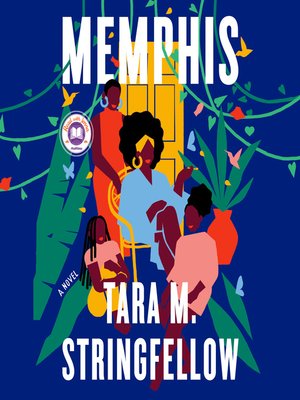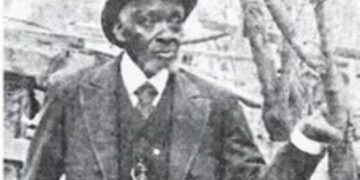
Stringfellow was born in Kansas City, Missouri. Her mother, Nadolyn, is a nurse and her father, a retired Major in the Marines, who currently works at the Pentagon. Calling her father a “Marine poet,” she credits him with introducing her literature. During her early years, Stringfellow lived with her parents at Camp Courtney, a U.S. Marine base in Japan. She has also lived in Okinawa, Ghana, Chicago, Cuba, Spain, Italy, and Washington, DC. She earned a BA degree in English Literature and African American Studies at Northwestern University in Evanston, Illinois; she also holds a law degree from Chicago-Kent College of Law. Most recently, she earned an MFA degree from Northwestern in both poetry and fiction.
When she was 30, Stringfellow moved to Memphis from Chicago, leaving behind her marriage and her career as a successful attorney. Of her Chicago life, he has said, “I hated every moment of it. . . Every second, I said, ‘Why aren’t I writing? So, this is life?”” She then enrolled in the MFA program and, after graduating, took a job at a tenth grade English teacher in Memphis; while she taught she was also writing Memphis. She continues to live there, saying she loves the city above all others. She enjoys sitting on her porch swing with her hound, Huckleberry, chatting with her neighbors. Like Joan with her sketchbook in Memphis, Stringfellow always keeps her notebook nearby.
On her website, Stringfellow writes that contemporary racism “sparked my foray into fiction,” particularly what occurred after the 2016 election. She writes, “I was not prepared for the tsunami of hate, nationalism, and domestic terrorism aimed not only at Blacks, but at anyone marginalized–immigrants and refugees, my Muslim and Jewish brethren, all queer folk, Asian Americans, women . . ..” In an interview with Independent, her words are even more inflammatory: “I had to write this novel or set fire to my country.”
In spite of the anger implicit in of these comments, Memphis is not a particularly angry novel. Rather it is a strong family novel tracing the history of four women who, indeed, have experienced the horrors of racism, but who not only survive but manage to conquer. The strength of these women transcends race and makes them meaningful to all readers.
Hazel, the mother of Miriam and August, is, like Stringfellow’s own grandmother, the first Black nurse in a white hospital and her husband the first Black police officer in the city. His White fellow officers murder him just before Miriam’s birth, yet Hazel manages to make a life for both Miriam and August, born later to a unknown father. Her talents as a dressmaker and quilter add artistic meaning to her existence.
Miriam, just out of high school and planning to become a nurse, too, falls into blind, adolescent love with an outsider from Chicago, who, like Stringfellow’s father, is a Marine. But Jax is no poet–rather a soldier so conditioned to violence that he carries it into his marriage. The novel begins in 1995 when Miriam, realizing that staying with him is dangerous both to herself and their young daughters Joan and Mya, leaves with nothing other than a few dollars and their dog Wolf.
Lacking few alternatives, Miriam heads to Memphis to the home of her half-sister August whose life has also been ruined by a bad relationship that results in her son Derek, who from boyhood is both thug and a sexual predator: when he was eight, he raped three-year-old Joan with a coat hanger.
August, a talented singer, (Stringfellow writes that she has a voice comparable to that of Aretha Franklin), makes a bare living as a hairdresser. Still, she willingly opens her home to Miriam and her daughters–both sisters seek to protect the girls from Derek, a rather shadowy figure, who is fated for a tragic end.
Joan, who emerges as the central character of the novel, is ten at the time of the move to Memphis; she already shows considerable talent as an artist, concentrating on drawing the women in her family and in the community. Family and teachers recognize her talent early and make sure that she gets local art instruction at Rhodes College. Her teacher there, knowing that she has the ability to become the first famous Black female artist, helps her land a scholarship at an art school in London: a triumph for all of these strong women.
Memphis (2022) is a first novel by a woman whose family history resonates in the city where she sets her novel. She has written, “Growing up, I knew my grandfather was the first Black homicide detective in Memphis, but the circumstances of his death were as murky as the banks of the Mississippi from which his body was pulled. . .. I also knew that my grandmother was the first Black nurse at Mount Zion Baptist Hospital in Memphis.” In her novel, Stringfellow incorporates these facts along with other stories from her family history into her intriguing and highly readable novel.
Stringfellow was born in Kansas City, Missouri. Her mother, Nadolyn, is a nurse and her father, a retired Major in the Marines, who currently works at the Pentagon. Calling her father a “Marine poet,” she credits him with introducing her literature. During her early years, Stringfellow lived with her parents at Camp Courtney, a U.S. Marine base in Japan. She has also lived in Okinawa, Ghana, Chicago, Cuba, Spain, Italy, and Washington, DC. She earned a BA degree in English Literature and African American Studies at Northwestern University in Evanston, Illinois; she also holds a law degree from Chicago-Kent College of Law. Most recently, she earned an MFA degree from Northwestern in both poetry and fiction.
When she was 30, Stringfellow moved to Memphis from Chicago, leaving behind her marriage and her career as a successful attorney. Of her Chicago life, he has said, “I hated every moment of it. . . Every second, I said, ‘Why aren’t I writing? So, this is life?”” She then enrolled in the MFA program and, after graduating, took a job at a tenth grade English teacher in Memphis; while she taught she was also writing Memphis. She continues to live there, saying she loves the city above all others. She enjoys sitting on her porch swing with her hound, Huckleberry, chatting with her neighbors. Like Joan with her sketchbook in Memphis, Stringfellow always keeps her notebook nearby.
On her website, Stringfellow writes that contemporary racism “sparked my foray into fiction,” particularly what occurred after the 2016 election. She writes, “I was not prepared for the tsunami of hate, nationalism, and domestic terrorism aimed not only at Blacks, but at anyone marginalized–immigrants and refugees, my Muslim and Jewish brethren, all queer folk, Asian Americans, women . . ..” In an interview with Independent, her words are even more inflammatory: “I had to write this novel or set fire to my country.”
In spite of the anger implicit in of these comments, Memphis is not a particularly angry novel. Rather it is a strong family novel tracing the history of four women who, indeed, have experienced the horrors of racism, but who not only survive but manage to conquer. The strength of these women transcends race and makes them meaningful to all readers.
Hazel, the mother of Miriam and August, is, like Stringfellow’s own grandmother, the first Black nurse in a white hospital and her husband the first Black police officer in the city. His White fellow officers murder him just before Miriam’s birth, yet Hazel manages to make a life for both Miriam and August, born later to a unknown father. Her talents as a dressmaker and quilter add artistic meaning to her existence.
Miriam, just out of high school and planning to become a nurse, too, falls into blind, adolescent love with an outsider from Chicago, who, like Stringfellow’s father, is a Marine. But Jax is no poet–rather a soldier so conditioned to violence that he carries it into his marriage. The novel begins in 1995 when Miriam, realizing that staying with him is dangerous both to herself and their young daughters Joan and Mya, leaves with nothing other than a few dollars and their dog Wolf.
Lacking few alternatives, Miriam heads to Memphis to the home of her half-sister August whose life has also been ruined by a bad relationship that results in her son Derek, who from boyhood is both thug and a sexual predator: when he was eight, he raped three-year-old Joan with a coat hanger.
August, a talented singer, (Stringfellow writes that she has a voice comparable to that of Aretha Franklin), makes a bare living as a hairdresser. Still, she willingly opens her home to Miriam and her daughters–both sisters seek to protect the girls from Derek, a rather shadowy figure, who is fated for a tragic end.
Joan, who emerges as the central character of the novel, is ten at the time of the move to Memphis; she already shows considerable talent as an artist, concentrating on drawing the women in her family and in the community. Family and teachers recognize her talent early and make sure that she gets local art instruction at Rhodes College. Her teacher there, knowing that she has the ability to become the first famous Black female artist, helps her land a scholarship at an art school in London: a triumph for all of these strong women.





























